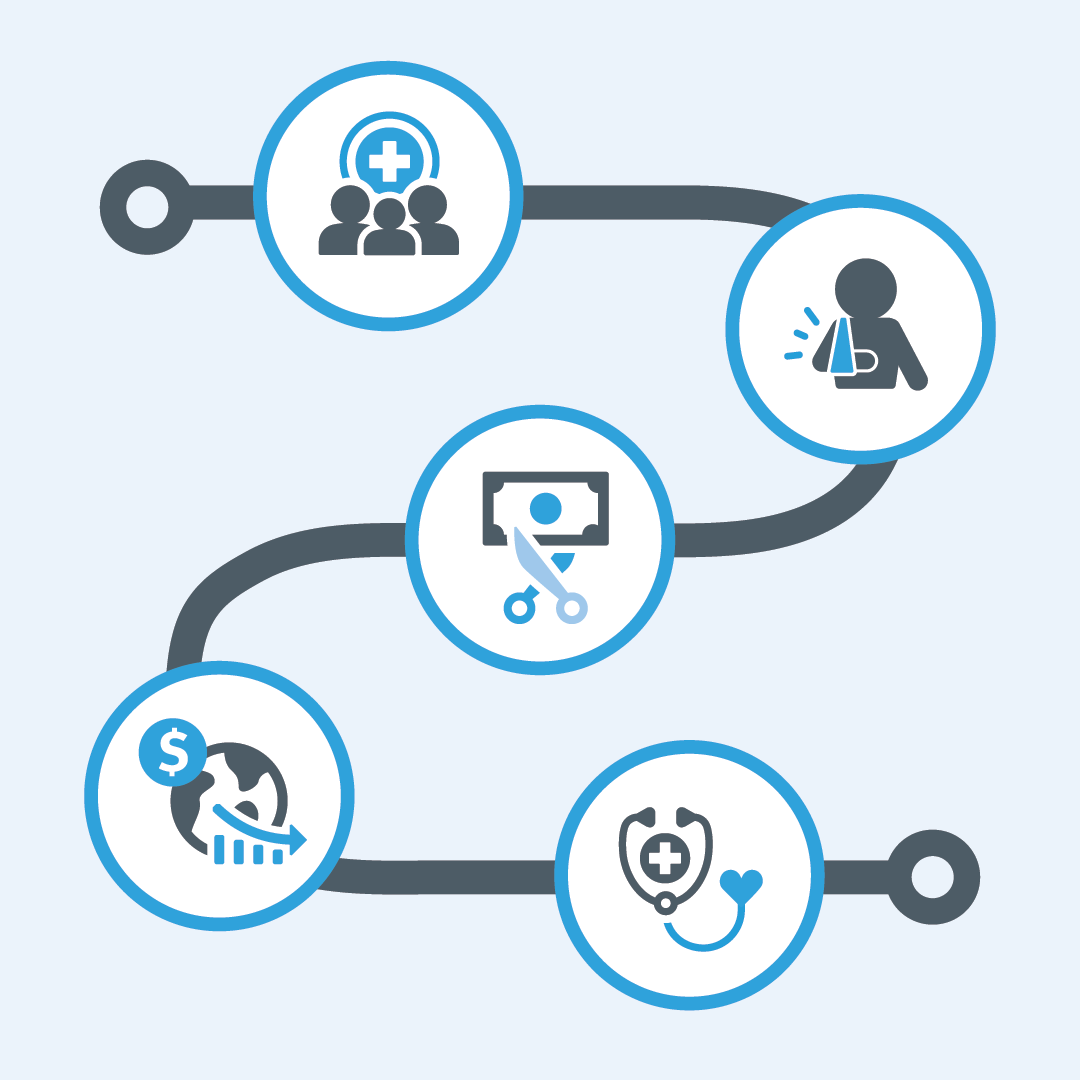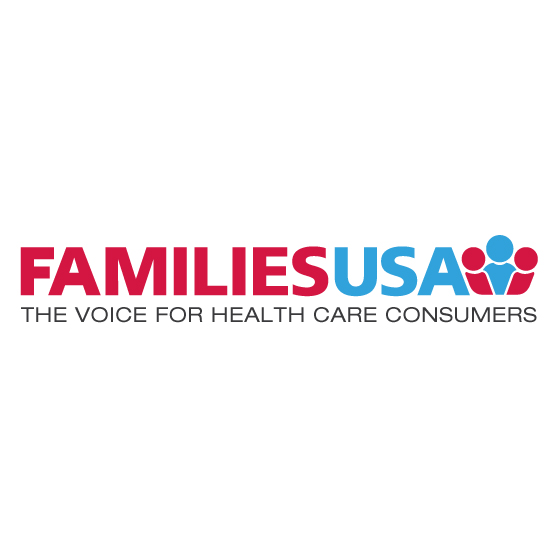
Medicaid Block Grants: A Mechanism for Devastating Cuts for States and Families
01.30.2020
Medicaid Block Grants: A Mechanism for Devastating Cuts for States and Families
After months of speculation, the Trump administration released its guidance on Medicaid block grants on January 30. This guidance gives states a green light to pursue a radical policy that Congress already rejected. It ignores the health care needs of millions and the state budget constraints of governors. Any state that agrees to this deeply misguided policy is putting state taxpayer dollars and constituents’ lives at risk.
What Are Medicaid Block Grants?
A “block grant” is a fixed amount of money that the federal government would give to a state to cover a portion of the costs of its Medicaid program, an amount that is typically less than what the state receives today under Medicaid’s entitlement structure. If the state’s Medicaid costs exceed the amount of the block grant, it will have to use its own funds to make up the difference or, more likely, cut provider rates and/or services for low-income people or take away their Medicaid coverage. The difference compounds year over year as the block grant amount fails to keep up with the cost of health care.
Didn’t Congress Try to Pass Medicaid Block Grants Already?
Block granting Medicaid has been a cornerstone of this administration’s agenda. The Trump administration tried and failed to have Congress create a similar structure for Medicaid in 2017 — both an option for states to block grant Medicaid and a mandatory nationwide per capita cap on federal Medicaid funds to states — as part of the effort to repeal the Affordable Care Act. The destructiveness of capping federal Medicaid funds and the devastating impact on families was one of the most important reasons that three Republicans joined with all Democrats in opposing that legislation.
How Is This Guidance Different from Congress’ 2017 Attempt?
The “Healthy Adult Opportunity[i]” framework announced by the Administration invites states to cap a portion of their federal funding for Medicaid: funding for low-income adults, with few exceptions. Although some of the Administration’s framing suggests a focus on Medicaid expansion adults, the formal guidance itself includes broader adult populations. This means coverage and benefits for our most vulnerable — some subset of seniors, pregnant women, children (19 year and older), homeless adults, and young people aging out of foster care are on the chopping block. States would have the option to cut the Medicaid program indiscriminately (or discriminately), with little oversight. So, what is at risk? Access to the drugs you need, the providers you see, or the nursing home that cares for your relatives are all components that could be cut by your state.
After the administration’s failed 2017 legislative attempt to block grant Medicaid, the “Healthy Adult Opportunity” philosophy remains the same. However, this approach illegally implements a policy that requires Congressional authority. In addition to subverting Congress, the Administration has also subverted the American public by skipping a public comment process mandatory for any significant change in Administration policy under the Administrative Procedures Act.
Does the “Healthy Adult Opportunity” Program Impact Children?
Yes. The research is clear: There is a critical link between parents with Medicaid coverage and an increase in critical health services for children. In fact, coverage for parents increased child well visits — where children receive important care such as screening, medical treatment, and immunizations — by nearly 30%.[ii] Without this coverage for parents, children stand to lose coverage themselves and lose access to health care that could significantly impact their long-term health outcomes.
It is also important to remember that the administration is strongly committed to using capped federal funding to apply similar Medicaid cuts across the entire Medicaid program, including over 35 million children enrolled in Medicaid. In each of its annual budgets[iii] sent to Congress, the Trump administration has proposed caps on Medicaid funds as a vehicle for truly massive, trillion-dollar cuts to Medicaid.
Is It Legal?
The Trump administration cannot legally block grant Medicaid through guidance; only Congress can legislate these changes. Nicholas Bagley, a health law professor at the University of Michigan and former Justice Department attorney, described the issue succinctly: “It’s very hard to square the Medicaid statute with a true block grant proposal.”[iv]
While Section 1115 waivers give states broad authority to waive provisions, Medicaid statute delineates a few requirements that must be met. This block grant guidance runs afoul of those requirements in at least two instances. First, the language defining the federal financial matching rate appears in a section of the Social Security Act (Section 1903) that is not waivable under Medicaid statute. Second, this block grant proposal does not “assist in promoting the objectives” of the Medicaid program, a foundational requirement of Section 1115 waivers.
What Would This Mean for My State?
The block grant approach follows a predictable playbook — states receive greater “flexibility” (or more appropriately, less oversight) in exchange for accepting less federal money. Under current law, federal support automatically changes to match a state’s spending, and needs. Federal support increases if a state’s costs go up, like with an opioid epidemic, natural disaster, or in the event a state decides to cover new medical treatments for its residents. In contrast, a state that elects to block grant Medicaid would face an awful choice in the event of health care cost trends that exceed the inflation rate or when facing a public health crisis. Once that happens, the state will start rolling back mandatory benefits that serve kids, people with disabilities, and seniors and cost-effective optional benefits like dental care, without oversight.
If you live in Alaska, Georgia, Oklahoma, or Tennessee, your state is seriously considering pursuing this Medicaid block grant option.
Does this Guidance Offer States New Opportunities to Expand Medicaid?
No. This guidance offers the same options states have always had under the ACA, to implement full Medicaid expansion with 90% federal match or to implement a “partial” Medicaid expansion at the state’s regular federal match rate. The only flexibility states get in this guidance is to cut services or rates in exchange for major risk to their budgets.
Should My Governor Pursue the Block Grant?
No. Governors have the difficult task of financing competing priorities in their state. A recurring gubernatorial concern is that the federal government might reduce federal support for their programs. But the current state-federal Medicaid partnership provides states with a dependable source of federal funds. No governor should agree to a policy that would reject the federal guarantee to match its actual Medicaid spending. The only conceivable explanation for your governor to accept block grants is that they are making short term budget decisions without regard for the future needs of their constituents.
[i] Centers for Medicare and Medicaid Services State Medicaid Director Letter #20-001, Healthy Adult Opportunity, January 30, 2020, https://www.medicaid.gov/sites/default/files/Federal-Policy-Guidance/Downloads/smd20001.pdf
[ii] Maya Venkataramani, Craig Evan Pollack, and Eric T. Roberts, “Spillover Effects of Adult Medicaid Expansions on Children’s Use of Preventive Services,” Pediatrics 140, no. 6 (December 2017), https://doi.org/10.1542/peds.2017-0953.
[iv] Shira Stein, “Medicaid Block Grant Policy Could Face High Legal Hurdles,” Health Law & Business News, Bloomberg Law, January 28, 2020, https://news.bloomberglaw.com/health-law-and-business/medicaid-block-grant-policy-could-face-high-legal-hurdles.




